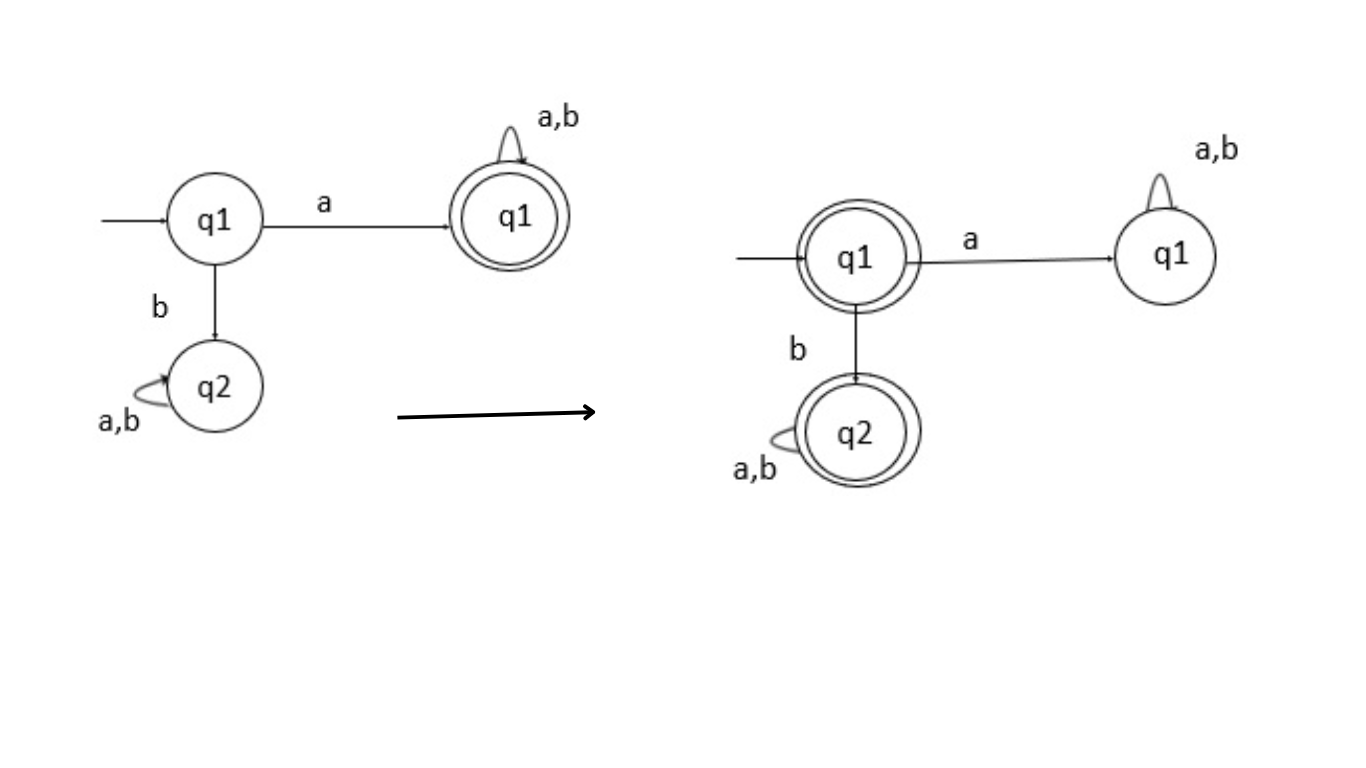Complementation Process in DFA
The complementation process in deterministic finite automata (DFA) is explained as follows:
Consider a DFA defined by (Q, Σ, δ, q0, F) that accepts the language L1. Now, to define a DFA that accepts the language L2, where L2 = ̅L1 (complement of L1), we do the following:
The new DFA for L2 is defined as (Q, Σ, δ, q0, Q – F), where:
- Q is the set of states in the DFA.
- Σ is the alphabet.
- δ is the transition function.
- q0 is the initial state.
- F is the set of final states.
In essence, we transform the non-final states into final states and the final states into non-final states in the original DFA.
The language accepted by the complemented DFA, L2, becomes the complement of the language accepted by the original DFA, L1.
Examples: Let’s consider some examples to illustrate the complementation process of DFA.

Example 1: Consider two languages, L1 and L2:
In L1, all strings start with ‘a’ over an alphabet {a, b}. L1 = {a, ab, aa, aba, aab, aaa, …}
In L2, all strings do not start with ‘a’ over the same alphabet. L2 = {ε, b, ba, bab, baa, bba, …}
Here, we observe that L2 = ̅L1, meaning the strings accepted by L2 are the complement of those accepted by L1.
Now, to construct the DFA for the compliment:
We interchange the final and non-final states. For the original DFA, where q0 transitions to q1 on ‘a’, in the complemented DFA, q0 will transition to a dead state since q1 is now non-final. The resulting complemented DFA will not generate strings that start with ‘a’.
This process involves modifying the original DFA to create a new DFA that accepts the complement of the language recognized by the original DFA.
What is Concatenation
In the field of formal language theory and computer programming, string concatenation refers to the process of combining character strings by placing them next to each other. For instance, if you combine “snow” and “ball,” you get “snowball.” In some formal descriptions of concatenation theory, often known as string theory, string concatenation is considered a fundamental concept.